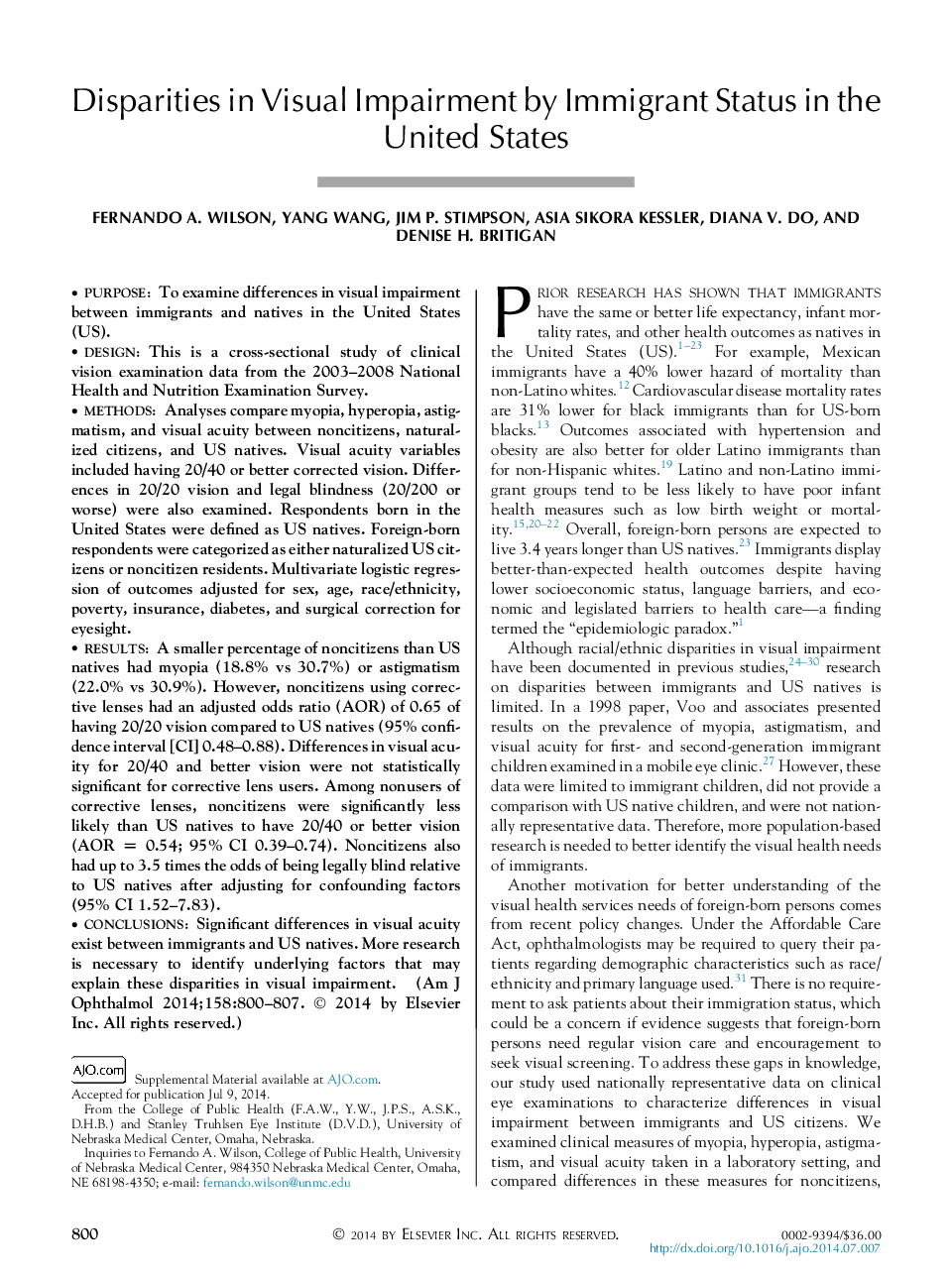| کد مقاله | کد نشریه | سال انتشار | مقاله انگلیسی | نسخه تمام متن |
|---|---|---|---|---|
| 6195770 | 1602131 | 2014 | 13 صفحه PDF | دانلود رایگان |
PurposeTo examine differences in visual impairment between immigrants and natives in the United States (US).DesignThis is a cross-sectional study of clinical vision examination data from the 2003-2008 National Health and Nutrition Examination Survey.MethodsAnalyses compare myopia, hyperopia, astigmatism, and visual acuity between noncitizens, naturalized citizens, and US natives. Visual acuity variables included having 20/40 or better corrected vision. Differences in 20/20 vision and legal blindness (20/200 or worse) were also examined. Respondents born in the United States were defined as US natives. Foreign-born respondents were categorized as either naturalized US citizens or noncitizen residents. Multivariate logistic regression of outcomes adjusted for sex, age, race/ethnicity, poverty, insurance, diabetes, and surgical correction for eyesight.ResultsA smaller percentage of noncitizens than US natives had myopia (18.8% vs 30.7%) or astigmatism (22.0% vs 30.9%). However, noncitizens using corrective lenses had an adjusted odds ratio (AOR) of 0.65 of having 20/20 vision compared to US natives (95% confidence interval [CI] 0.48-0.88). Differences in visual acuity for 20/40 and better vision were not statistically significant for corrective lens users. Among nonusers of corrective lenses, noncitizens were significantly less likely than US natives to have 20/40 or better vision (AORÂ = 0.54; 95% CI 0.39-0.74). Noncitizens also had up to 3.5 times the odds of being legally blind relative to US natives after adjusting for confounding factors (95% CI 1.52-7.83).ConclusionsSignificant differences in visual acuity exist between immigrants and US natives. More research is necessary to identify underlying factors that may explain these disparities in visual impairment.
Journal: American Journal of Ophthalmology - Volume 158, Issue 4, October 2014, Pages 800-807.e5
